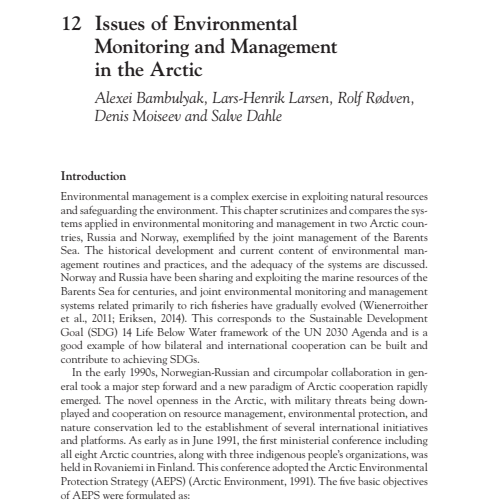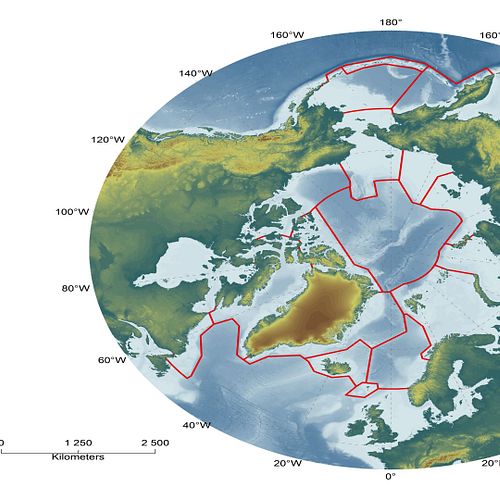11 November 2022 news
Akvaplan-niva scientists and collegues from MMBI and AMAP are authors of one chapter in the recently published book "Global development in the Arctic. International cooperation for the Future".
Climate change with melting sea ice in the Arctic Seas opens up new opportunities for industrial developments in resource exploitation, including petroleum exploration and exploitation, offshore mining, shipping, fishing, and tourism. Increased activity increases the environmental risk associated with industrial developments. Issues of Arctic environmental protection and sustainable development of the northern regions are on the agenda of international fora, including the UN and the Arctic Council (AC), where updated strategies, recommendations, and program documents are approved. The Arctic Seas are geographically distributed among eight sovereign states, each with its own system for environmental monitoring, impact assessment, and management. This chapter looks at the environmental monitoring and assessments carried out in the Arctic and presents the roles of the six working groups organized under the AC. The geographic focus is on the Barents Sea, shared by two neighboring Arctic states – Norway and Russia.
As is also stated in the Ex-post reflecions at the end of the book chapter this book and the chapter was written in 2021 and does not reflect recent changes in international agenda, including the Arctic cooperation.
https://doi.org/10.4324/9781003246015-16
Issues of Environmental Monitoring and Management in the Arctic


